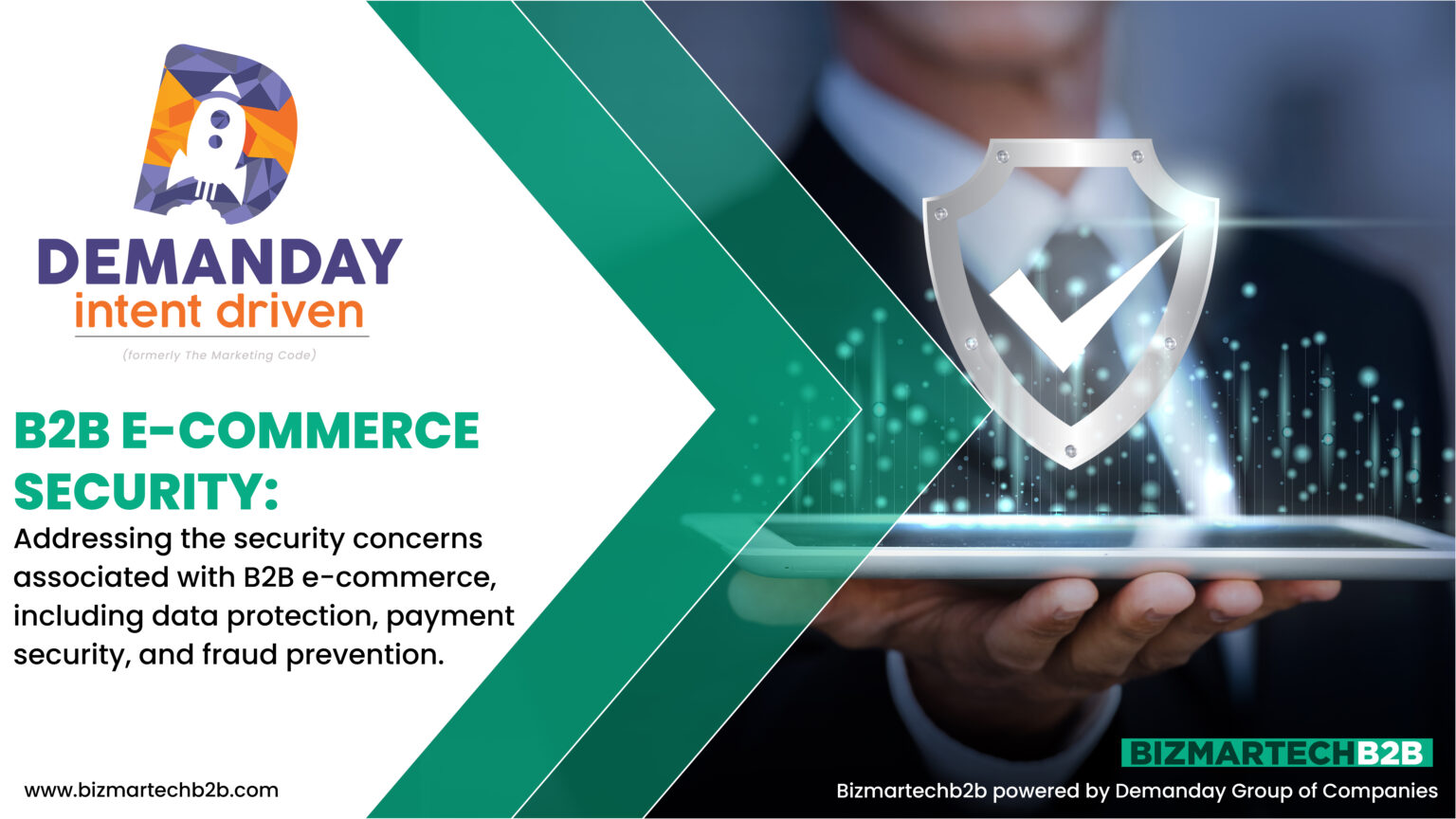B2B (business-to-business) e-commerce security is of paramount importance to ensure the confidentiality, integrity, and availability of sensitive information exchanged between businesses. Addressing security concerns in B2B e-commerce involves implementing a comprehensive strategy that covers various aspects, including data protection, payment security, and fraud prevention. Here’s an overview of how to address these concerns:
- Data Protection: a. Encryption: Ensure that all data transmissions between parties are encrypted using protocols like SSL/TLS. This prevents unauthorized access to sensitive data during transit. b. Authentication and Access Control: Implement strong authentication mechanisms (e.g., multi-factor authentication) to verify the identities of users and limit access to authorized personnel only. c. Data Minimization: Collect and store only the data necessary for transactions, reducing the risk associated with storing excessive sensitive information. d. Regular Auditing and Monitoring: Continuously monitor and audit data access and transactions to detect any unauthorized or suspicious activities promptly.
- Payment Security: a. Secure Payment Gateways: Utilize reputable and secure payment gateways that comply with Payment Card Industry Data Security Standard (PCI DSS) requirements. b. Tokenization: Implement tokenization to replace sensitive payment card data with unique tokens, reducing the exposure of actual card details. c. Fraud Detection: Employ advanced fraud detection systems that analyze transaction patterns and behaviors to identify and prevent fraudulent activities. d. Secure APIs: If APIs are used for payment processing, ensure they are properly secured with strong authentication and authorization mechanisms.
- Fraud Prevention: a. Machine Learning and AI: Implement machine learning algorithms to analyze large datasets and detect anomalies or patterns indicative of fraudulent behavior. b. Geolocation Verification: Use geolocation data to verify the legitimacy of transactions and detect unusual geographic patterns. c. IP Blocking: Block suspicious IP addresses or regions known for fraudulent activities to reduce the risk of attacks. d. Order Verification: Implement order verification processes, such as confirmation emails or phone calls, for high-value or unusual transactions.
- Supplier and Customer Verification: a. Due Diligence: Conduct thorough background checks and due diligence on potential suppliers and customers before engaging in transactions. b. Identity Verification: Implement identity verification procedures, such as verifying business licenses and tax identification numbers, to ensure the legitimacy of entities involved. c. Digital Signatures: Use digital signatures to authenticate and validate the origin and integrity of electronic documents exchanged between parties.
- Employee Training and Awareness: Educate employees about cybersecurity best practices, social engineering tactics, and the importance of following security protocols to prevent inadvertent security breaches.
- Incident Response Plan: Develop a comprehensive incident response plan outlining steps to be taken in case of a security breach or data compromise. This should include communication protocols, containment strategies, and recovery procedures.
- Regulatory Compliance: Ensure compliance with relevant data protection regulations, such as GDPR, HIPAA, or industry-specific standards, to avoid legal and financial repercussions.
By addressing these security concerns and implementing a robust B2B e-commerce security strategy, businesses can create a secure and trustworthy environment for conducting online transactions with their partners and customers.

